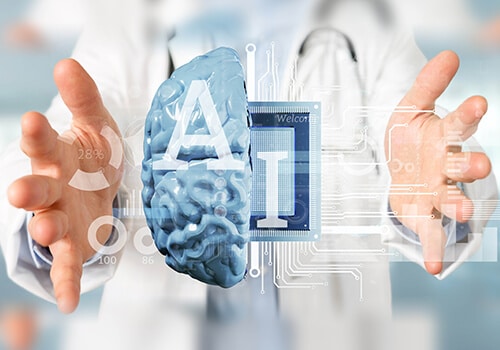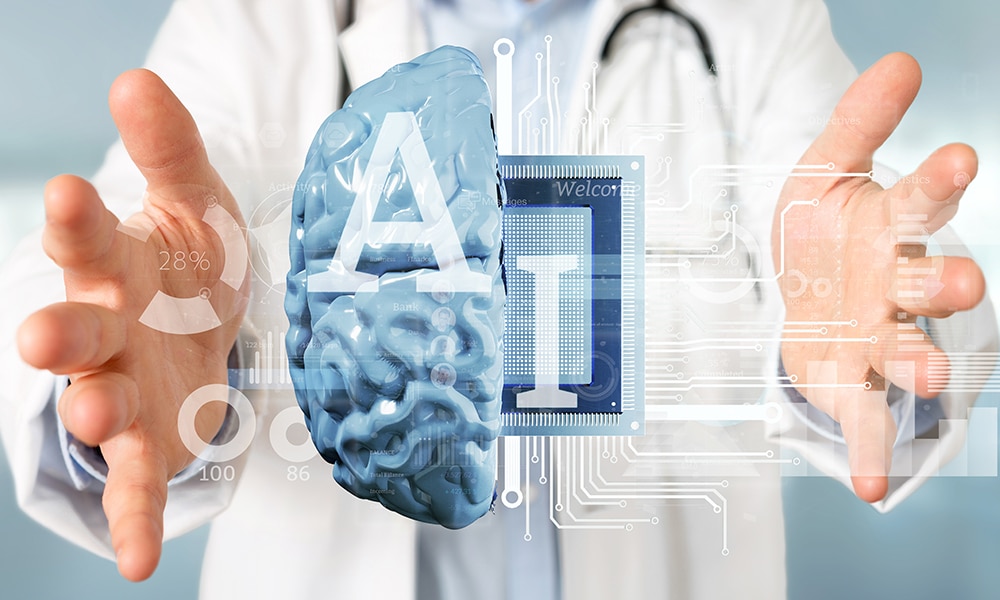Electronic Health Records (EHRs) are supposed to be efficient and assist in the swift delivery of healthcare services to patients. However, there seems to be a total disconnect between the intended purpose of EHRs and how they actually function in the industry. Thanks to the learning curve that comes with operating a health record system, the concerns with data interoperability, the technology over which they are built, and more, EHR solutions are mostly rigid and monolithic today.
For the uninitiated, a report also reveals that doctors in the US spent close to 16 minutes on EHR functions per patient. This is not just time-consuming but ironic as well. However, there is promise in this space as modern solutions powered mainly by Artificial Intelligence (AI) and machine learning are leading the way in making EHRs more effective, swift, and efficient.
In this post, we will look at how AI is shaping the future of EHRs and assisting healthcare providers around the world. But before that, let’s start from the basics.
What is EHR?
Electronic health records are the digital iterations of the conventional paper-based records healthcare organizations maintained to facilitate their service delivery. Because it’s digital, it is easier to retrieve individual records of patients, manage elaborate details about patient history, share data among respective stakeholders such as clinicians, doctors, surgeons, diagnostic centers, and more.
To give you a better understanding of the details EHRs contain, here’s a quick list:
- Patient details and contact information
- Information on a patient’s visit to healthcare centers
- Family history
- Allergies and reactions to specific elements and medications
- Insurance details
- Details on chronic ailments or prevailing diseases
- Information on surgeries performed previously and more
Key Benefits of EHRs
Thanks to the fact that records are digitized, they offer tons of benefits to healthcare providers.

- Modifying and updating patient details become simpler
- More patient-related information could be added and stored such as prescriptions, data from medical imaging and reports, and more
- Sources of specific records and reports could be linked for further analysis
- They assist doctors in making better clinical decisions
- Pave the way for personalized medications and treatment procedures
- Automate several redundant tasks and more
Though these are advantages, most of them exist only on paper. The distance between ambitions and implementations makes EHRs less effective in the real world. However, the onset of AI is gradually fixing operational loopholes and concerns in the space and making the way for optimized patient care and service delivery.
Let’s explore the role of AI in shaping electronic health records.
The Role of AI in EHRs
Reduce execution of redundant tasks
Reports published by AMA reveal that clinicians spend close to 50% of their time doing redundant tasks such as updating documents, entering orders and patient details, billing, and more. This significantly reduces the time clinicians could spend on fostering better patient care and diagnosis.
With AI, however, the amount of time clinicians would spend on redundant tasks could be reduced or completely eliminated. This is mainly driven by NLP models that convert handwriting and voice records to text and help clinicians update relevant information seamlessly.
Precision Extraction of Relevant Patient Data
During surgeries or diagnoses of diseases, the service delivery of healthcare should be as swift as possible. This is especially crucial during emergencies when patients are admitted due to accidents for instance. In such cases, doctors or other healthcare professionals should be able to quickly retrieve the exact information they need about their patients to initiate treatment procedures.
At that time, they can’t afford to scroll through pages of text and search for what they are looking for. AI patches this concern through the precise extraction of relevant information. Several cloud-based EHR portals have what they call abstractors, which help professionals fetch specific details, notes, or data about a patient.
Optimized Healthcare Administration
Automation is one of the key benefits of AI in EHRs. The mere presence of massive volumes of data is enough to implement complex automation and pave the way for seamless hospital management.
With AI, concerns such as bed management, appointment management, roster development, staffing, staff morale and more could be easily fixed. Automated AI modules powered by predictive analytics can help administrators to forecast readmissions, appointment schedules for the day or week, patient mortality rates, recovery rates, and even manage the supply chain of hospital inventory.
Better Interoperability
Though data of patients exists on the cloud, they are still not standardized to a large extent. There is a difference in formatting or presentation of patient data across organizations and even teams within the same a hospital. AI can enable standardization of EHR and make data interoperable so any stakeholder can retrieve the data they are looking for without breaking their brains.
AI and machine learning models can ensure clinical documentation procedures are done, specific formatting is maintained, batches of bulk data from external sources are extracted and converted, and do more to streamline EHRs and their functionalities.
The Challenges in implementing AI in EHRs

And these are just the operational side of things. There are technical sides to the implementation as well. These include:
- Deploying and consistently maintaining the required storage space for AI processes
- Make the data as airtight and secure as possible because EHRs contain some of the most confidential personal information about patients and individuals.
- Make relevant data interoperable
- Maintain compliance to existing (and new) HIPAA regulations and standards and perpetually maintain high levels of data privacy and security
- Take care of adherence to data de-identification practices and more
Wrapping Up
The benefits and challenges of implementing AI in EHRs probably carry the same weightage. However, the challenges could be easily overcome through best practices and shuffling managerial decisions. Better and more impactful healthcare relies on the quality of electronic health records maintained and one of the most plausible ways to achieve this is through AI implementations.







